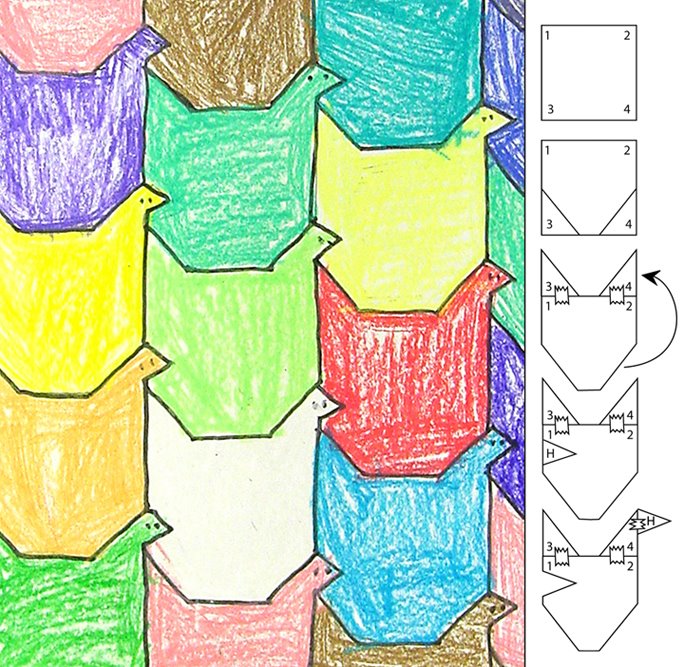

After repeated use, the stamps become saturated and tend to stick to the clay. Begin stamping into the surface to create a tessellated pattern. Out a slab using moist clay and smooth the surface. I use a mixture of terra cotta and a grogged earthenware clay body.

Tip: Use recycled clay to make stamps, so as not to waste new clay. Once the stamp is leather hard, smooth all the edges on the top and the bottom, that way you won’t hurt your hand on any sharp edges when pressing it and it’s less likely to chip or break. Will be touching when the shapes are put back together can help you decide what type of pattern to put on the stamp. Some shapes, such as hexagons, tessellate in such a way that a pattern created in the shape can flow to the adjacent shape if designed correctly. Loop or carving tools, enhance or alter the surface to finish the tessellation stamp.

Cut through the clay around the template using a very sharp, thin knife. Place a pre-cut paper template on the slab and then trace around it. Out a 1-inch-thick slab of clay and let it stiffen up a bit, but not to leather hard. Is an obvious one-but some others are turtle shells, salt flats, and snake skin, to name a few. There are many examples of tessellations in nature-a honeycomb Several years ago I became fascinated with tessellation, the repetition of shapes without overlapping or any gaps, and wanted to use this interesting technique of pattern making in my work.
Making tessellations how to#
In today's post, an excerpt from the Pottery Making Illustrated archive, she explains how to use them on slabs to make beautiful wall tiles. So she came up with another method in which she created bisque stamps that would create tessellations. At first she tried to make a mosaic with tessellated tiles, but wasn't happy with the results.

Then, I fill-in on both sides of the first shape to complete the row. I like to start tracing near the center of the paper. Now, trace the tessellation stencil on a large piece of drawing paper. Cut it out, and then tape the roof piece to the top. Draw a roof shape on the bottom part of the rectangle. Start with a rectangle of sturdy paper, such as card stock or an index card. I love the rows of little houses all nestled together. So cute! Instructions:įirst, make a stencil that can be traced repeatedly, with no spaces or gaps between the shapes. Don’t worry – these tessellating houses are a perfect beginner project!įor this mathematical art project, the tessellated house shape is translated, or slid, across the paper and traced repeatedly. My kids love exploring this art form!Ī tessellation is an arrangement of repeated shapes, without gaps or overlapping. Tessellations can be very complex and intricate, with shapes that are flipped or rotated to create a pattern. Escher’s artwork featuring these interlocking shapes and patterns. Tessellations are an intriguing combination of math and art.


 0 kommentar(er)
0 kommentar(er)
